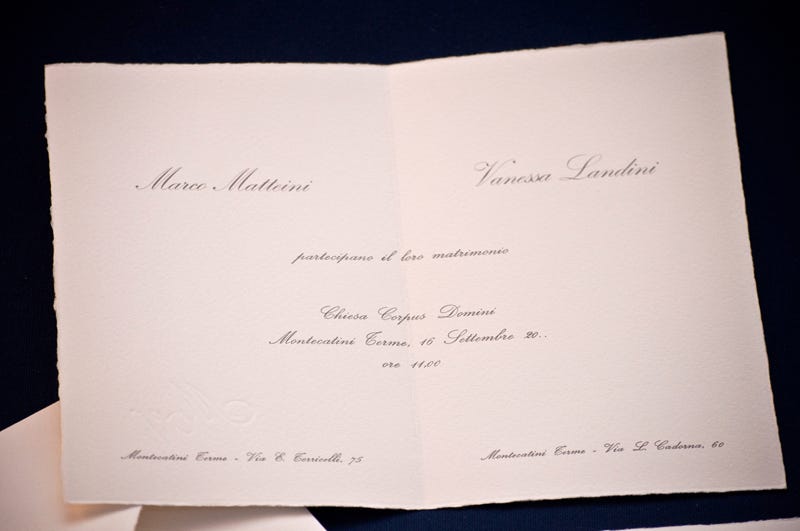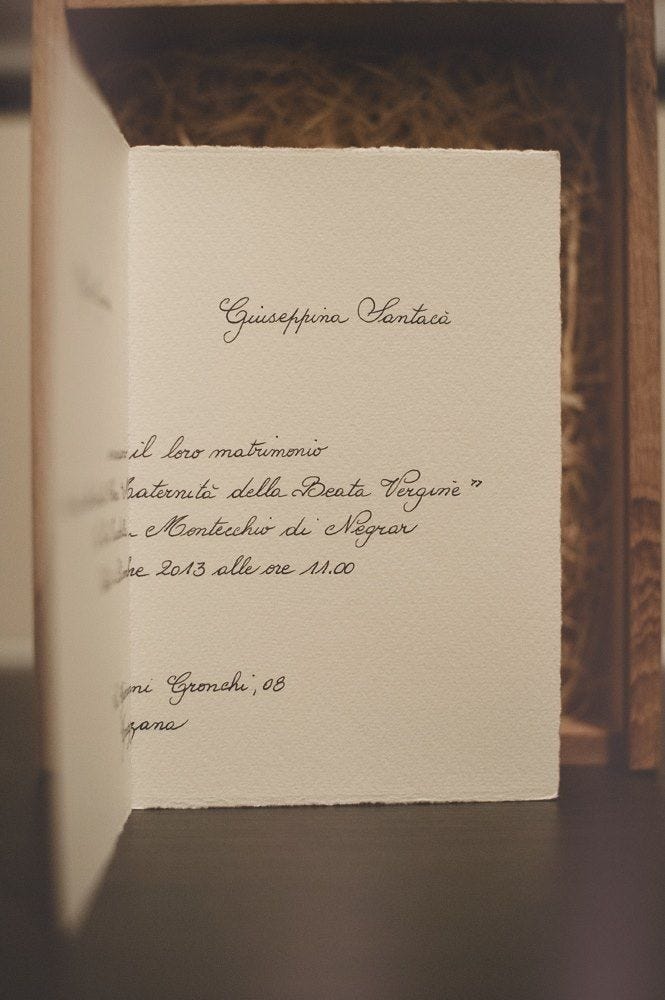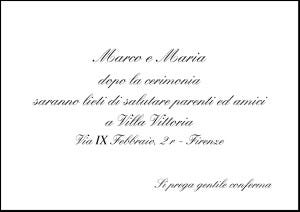To finish up what we started two Sundays ago on announcements and invitations, we shall add a few more indications.
We have described in detail the classic announcement (with its envelope and invitation), i.e. the one where the parents announce their children’s wedding. However, a version where the newlyweds-to-be announce their own wedding also exists: in this case, the rules on the type of paper, the proportions and the colors, are essentially the same, even though the spaces are taken up by a text of fewer words, so we have to be careful about occupying such spaces as well as, again, the proportions.
In a rather large paper announcement (say, 21 x 15 cm the envelope), folded in half, the newlyweds’ first names will have their own last names next to them and will take up space in the upper portion of the paper.

So, for example, “Paolo Rossi” will show in the left half of the announcement while “Anna Bianchi” will be in the right half; the line “announce their wedding” should be right in the middle, and, on the following row, the celebration venue with the date and time. In the two bottom corners, the newlyweds’ addresses: usually, these are the parents’ addresses, if the newlyweds-to-be still live with them, or their own respective addresses, if they don’t live together. If the couple gets married after they’ve moved in together, the two original families’ addresses should be mentioned anyway.

In the invitation, consequently, the newlyweds will always and solely be the ones inviting to the after-ceremony reception, where they will be greeting relatives and friends. The cliché expression establishes that the two first names (with no last names) will show on the paper, indicating that they will be pleased to greet, after the ceremony, all invitees at the decided-upon venue.

As this is definitely a leaner (yet elegant) system, it conveys a slightly less important wedding than the one where the parents announce and invite.
As for second (or third and up) marriages, the announcements will have to be simpler and less pretentious, since the tone of the wedding should not be too sparkling. At least, that’s the way it is here in Italy. So, the couple will announce their wedding, that will presumably take place at City Hall, and the invitation shall mention the coordinates of the post-wedding reception. In the following issues I will give some indications on second marriages.
It might very well happen that a couple send out announcements after the fact (after getting married): those who wish to have a very intimate ceremony usually choose this way. In this case, verbs should be in past tense – “they announce they have joined in marriage” – even though the invitation shall be in present tense as the newlyweds wish to invite people to a reception intentionally deferred in time.
The first time I received a “deferred” announcement I thought it was a mistake (it was the early 90s and I hadn’t yet received anything so extravagant). In case of a “posthumous” reception, an infinite chapter on rules about dresses and presents can be written, but we’ll have time to explore them in-depth later on.
Lastly, digital invitations. They’re getting more and more frequent, alongside with the construction of an ad-hoc website. The paper invitation, however, maintains its charm, and the very idea that you can keep it over the years – especially if it’s about someone whom you’re particularly close to – is something that could be very pleasant.
Recently, I’ve been invited to a beautiful wedding (despite the pandemics), where I went a few days ago. Next Sunday I will tell you about some interesting details.
Until next Sunday.
Ciao



